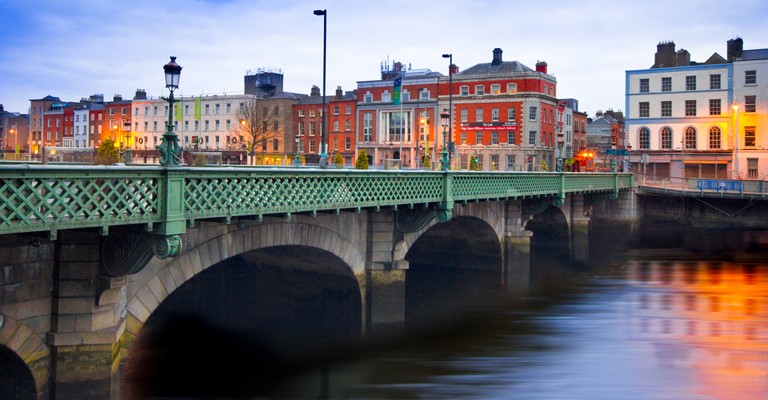DUBLIN — For generations, the Irish took for granted that affordable, plentiful housing was the bedrock of their economic security and government policy. Not long ago, Ireland had one of the world’s highest rates of homeownership.
The last several years have torn up those assumptions, leaving the country in the grip of a worsening housing crisis. Homeownership has dropped, evictions and homelessness have climbed sharply, surging demand for rental units has led to a shortage, and soaring rents are fodder for daily conversation, political campaigns and street protests.
In the last few years, Dublin has become one of the world’s 10 most expensive places to rent, ahead of cities like Tokyo, Sydney and Singapore. Deutsche Bank reported in May that typical rent for a midrange, two-bedroom apartment in Dublin was $2,018 a month, 23 percent more than in 2014 — the biggest increase of any city in the top tier.
“Almost everybody I know who is renting has been given notice to quit at some point. It happens so often it’s scary,” said Carly Bailey, who had been homeless twice before she was elected to Dublin City Council this year. “I don’t know where to put my daughter down for school. People like us just don’t know where we are going to be in a few months’ time.”
“The crisis has been particularly severe for young adults who see little choice but to spend much of their incomes on rent, and little prospect of being able to save and buy later on.
“You have a generation being locked out of the Irish social contract,” said Rory Hearne, a lecturer in the sociology of housing at Maynooth University. “A lot of young people are now realizing they will never own their own home, and that is a particularly terrible outlook when you live in a country where a house is usually your main asset for retirement.”
The chief executive of Ires Reit, Ireland’s largest private landlord, said in late 2016, “We’ve never seen rental increases like this in any jurisdiction” and “I truly feel badly for the Irish people.” Over the next two years, rents nationwide rose about 14 percent, the government reported.
The Irish division of Savills, an international property company, predicts that rents will increase an additional 17 percent over the next three years.
“The social and political risks are very high,” said Orla Hegarty, a professor of architecture at University College Dublin. “The high cost of housing is now a barrier to inward investment, to emigrants returning with skills, to people hoping to start families and who want to move. We’ll see that soon in lost growth and a falling birthrate.”
For those struggling to pay rents or unable to find homes, the risk is not in the future, but now.
After nine years renting a house in northern County Dublin, Sabrina Farrell and her three children, aged 4 to 16, were evicted in April when their landlord decided to sell. Unable to find a home they could afford, even with public rent assistance, they now share a single hotel room paid for by the local government, with no place to cook or play.
“The kids are living off McDonald’s,” Ms. Farrell said. “A couple of weeks ago, my older boy started self-harming because of the situation we are in.” “I have to be strong for them, and try my best,” she said, “but when you see your children suffering, it’s hard to cope. I started having panic attacks. I’m on medication now.”
Homelessness in Ireland has nearly quadrupled in the last five years, according to the government. Official figures for May showed 10,253 homeless people, including 1,700 families with 3,749 children. Many more, who emigrate or move in with parents or friends, go uncounted.
Even those who can afford their rents find that they have little security in a rising market. Leases can be for as little as six months, and Irish law allows landlords to evict tenants if they want to sell the property, renovate it or move in a family member.
Much of the anger in Ireland has focused on foreign-owned companies like Ires Reit, whose largest shareholder is a Canadian company, or Kennedy Wilson, a California firm, that have bought or built thousands of units in a few years and are expanding their holdings, while paying little or nothing in Irish taxes.
Such companies, often backed by foreign banks, pension funds and real estate companies, have been dubbed “cuckoo funds,” for birds that lay eggs in the nests of other species and crowd out their young. But they own fewer than 5 percent of the rental homes in the country, concentrated at the high end of the market.
Homeownership was long something of a national obsession in Ireland, where memories run deep of 19th-century tenants suffering at the hands of landlords, many of them British. After the country gained independence in the 1920s, its government went on a building campaign, and later sold many publicly-owned homes to their renters.
But by the last decade, Ireland, like the United States, had a property bubble built on debt, fueled by reckless lending and tax incentives. When the bubble burst in 2008, starting a deep recession, real estate prices plunged, people defaulted on loans, construction came to a halt and Irish banks, deeply indebted to foreign banks, flirted with insolvency.
Homeownership fell from about 80 percent of households to fewer than 70 percent — still ahead of peers like Britain, France and Germany, but lower than it had been in Ireland in four decades.
Source: nytimes






